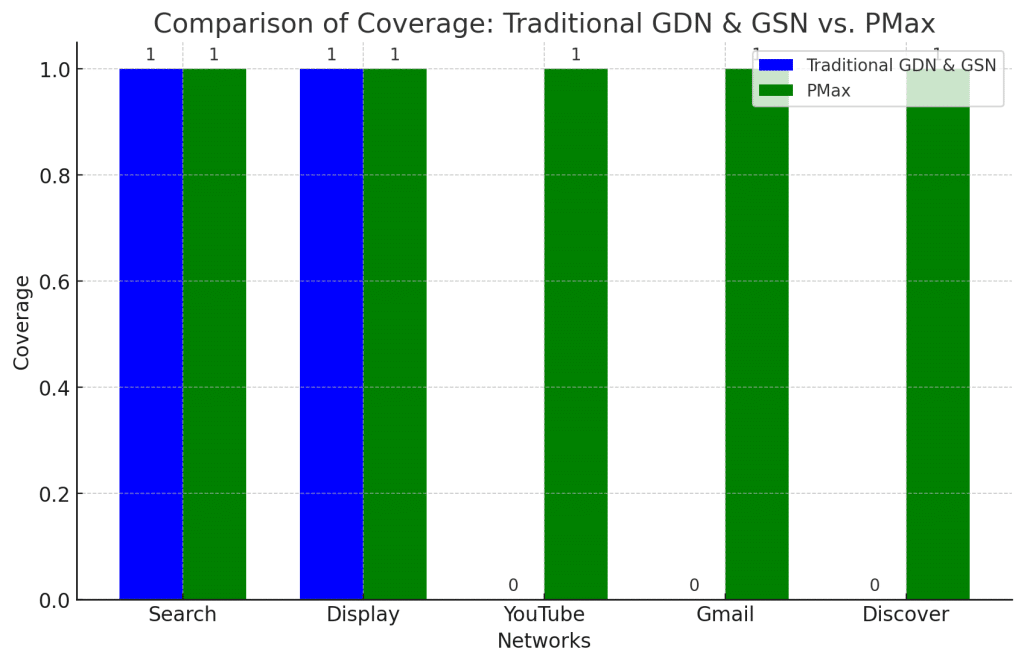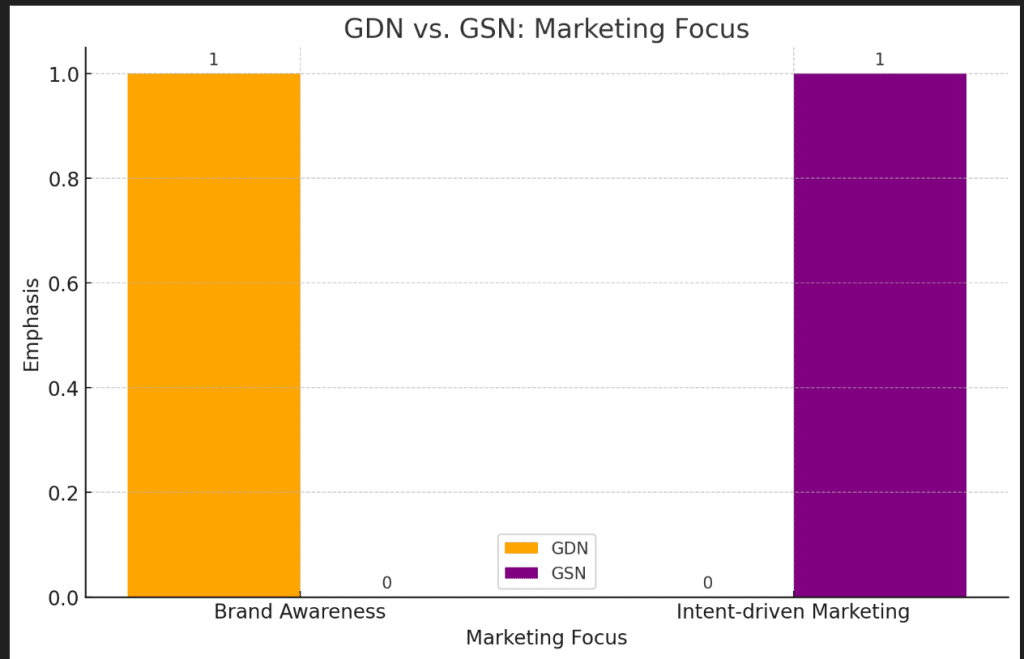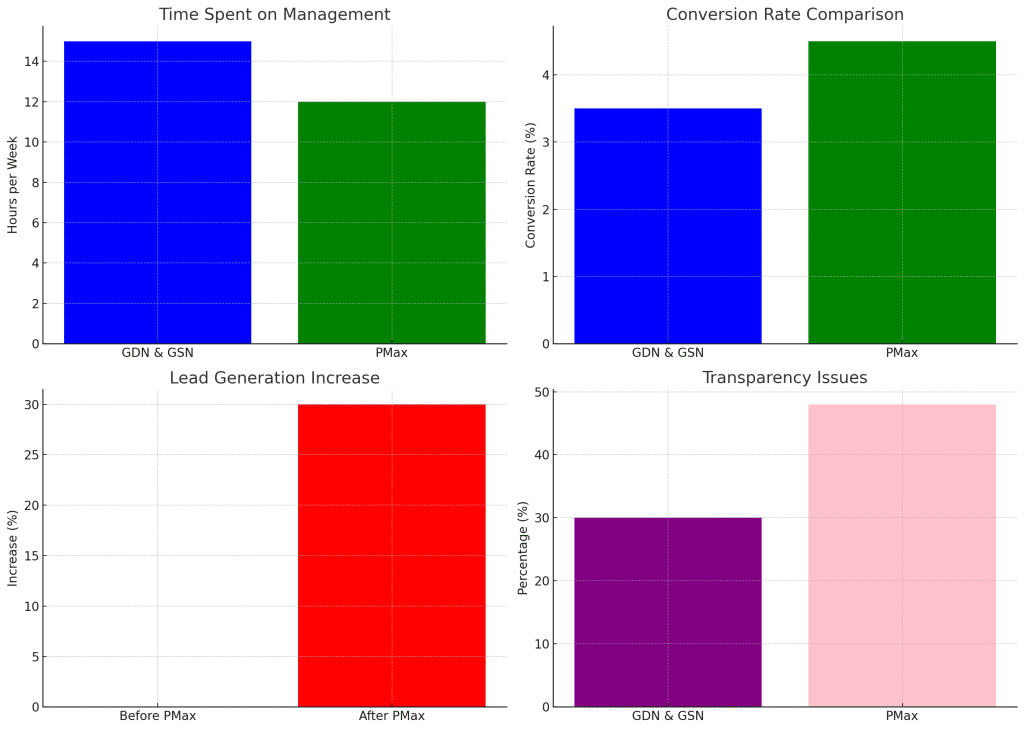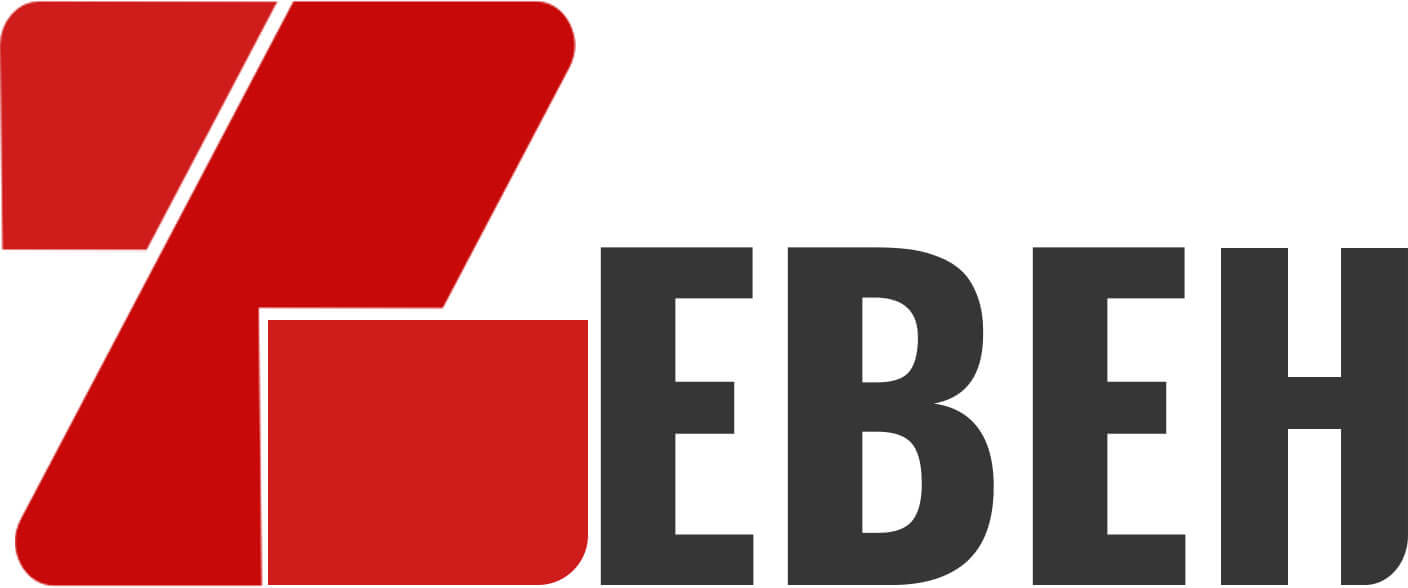Digital marketing is always changing, and staying on top of new trends is crucial. One of the latest innovations from Google Ads is the Performance Max campaign, or PMax. This article explores whether PMax is just a mix of Google Display Network (GDN) and Google Search Network (GSN), or if it offers something new. We’ll dive into a real-world case study from Limassol to see how PMax affects paid campaigns.
The PMax campaign Revolution
Google Ads Performance Max, or PMax, is a smart new campaign type that uses machine learning to optimize ad performance across multiple networks, like Search, Display, YouTube, Gmail, and Discover. But how does it compare to the traditional GDN and GSN?

To get it, we need to understand what GDN and GSN do. GDN focuses on display ads across a wide network of websites and apps, aiming for broad brand awareness. GSN targets users actively searching for specific keywords, making it great for intent-driven marketing.

PMax combines these elements but adds a layer of sophistication with Google’s machine learning algorithms. It aims to deliver the right message at the right time across all platforms, supposedly boosting efficiency and conversion rates. But is it really that effective?
“Performance Max campaigns use Google’s advanced machine learning models to automatically optimize your campaigns in real-time across all of Google’s advertising channels.” — Google Ads Help
“Performance Max is designed to help you drive performance based on your specified conversion goals, delivering more conversions and value by optimizing performance in real-time and across channels using Smart Bidding.” — Search Engine Journal
The Debate: Is PMax Campaigns the Future?
While the success of the Limassol campaign highlights the potential of PMax, it’s important to discuss its limitations and whether it truly replaces GDN and GSN.
Pros:
- Efficiency: PMax reduces the need for manual campaign management by automating bid adjustments and placements.
- Reach: It extends ad presence across multiple platforms, increasing the chance of reaching potential customers at various touchpoints.
- Performance: Machine learning continuously optimizes campaigns for better results.
Cons:
- Control: Marketers may feel they have less control over individual aspects of the campaign compared to managing GDN and GSN separately.
- Transparency: Understanding exactly where and why the budget is being allocated can be more complex with PMax.
- Learning Curve: There is a learning curve associated with setting up and interpreting PMax campaign data.

Case Study: PMax Campaign in Limassol
Let’s take a closer look at a PMax campaign conducted for a well-known financial industry brand based in Limassol. While we can’t disclose the brand name due to the sensitivity of the performance and spend data, the insights are still incredibly valuable. The monthly budget for this campaign was around $125,000.
The brand had previously relied on separate GDN and GSN campaigns with moderate success. Their goals were to increase online visibility and generate more qualified leads in a highly competitive market.
Before PMax campaign:
- Monthly Spend: $125,000
- Lead Generation: 2,273 leads per month
- Cost Per Lead (CPL): $55

When they switched to a PMax campaign, the results were impressive. Within the first month, the brand experienced a significant boost in performance metrics:
After PMax campaign:
- Monthly Spend: $125,000
- Lead Generation: 5,000 leads per month
- Cost Per Lead (CPL): $25

Their ads appeared on search results, display networks, YouTube, Gmail, and Google Discover. This multi-platform presence helped them reach a broader audience without managing multiple campaigns manually.
The real game-changer was the machine learning optimization. By continuously analyzing performance data, PMax adjusted bids and ad placements in real-time, ensuring the budget was spent more effectively. This level of automation and optimization was something the brand couldn’t achieve with GDN and GSN alone.
What’s Next for Your Business?
As you ponder these points, consider where your own business stands. Are you ready to embrace the future with PMax, or do you still see value in the more traditional, hands-on approach of GDN and GSN? The answer might just define the next chapter of your digital marketing journey.
Key Takeaways
- Efficiency vs. Control: Weigh the benefits of automation against the need for oversight.
- Case Study Insight: Limassol’s financial brand saw a dramatic improvement with PMax.
- Future Trends: Advanced machine learning could shape the future of digital marketing.
- Strategic Decisions: Each business must evaluate its specific needs and goals.
Final Thoughts
The shift to PMax campaigns offers exciting possibilities, but it’s not a one-size-fits-all solution. By carefully considering the unique aspects of your business, you can make an informed decision that aligns with your marketing strategy and goals.
Embrace the future, but do so with a clear understanding of what PMax can offer and how it fits into your overall digital marketing plan.
